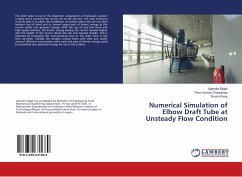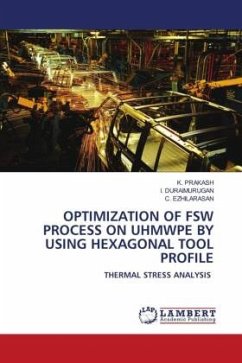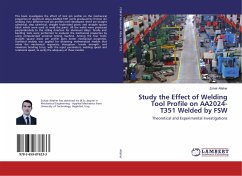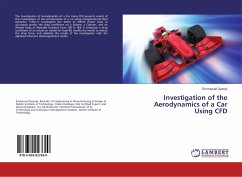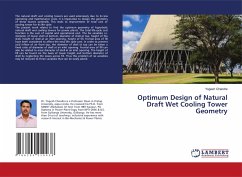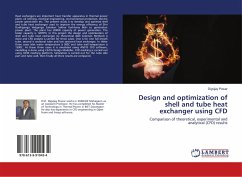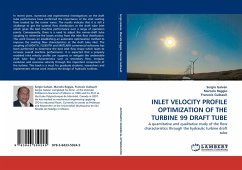
INLET VELOCITY PROFILE OPTIMIZATION OF THE TURBINE 99 DRAFT TUBE
A quantitative and qualitative study of the flow characteristics through the hydraulic turbine draft tube
Versandkostenfrei!
Versandfertig in 6-10 Tagen
52,99 €
inkl. MwSt.

PAYBACK Punkte
26 °P sammeln!
In recent years, numerical and experimental investigations on the draft tube performance have confirmed the importance of the inlet swirling flow created by the runner vanes. The results indicate that it is still a challenge to get the optimal flow distribution at the draft tube inlet which gives the best machine performance over a range of operation points. Consequently, there is a need to adjust the runner-draft tube coupling to minimize the losses arising from the inlet flow distribution. This work focuses on establishing an automatic optimization method to improve the swirling flow charact...
In recent years, numerical and experimental investigations on the draft tube performance have confirmed the importance of the inlet swirling flow created by the runner vanes. The results indicate that it is still a challenge to get the optimal flow distribution at the draft tube inlet which gives the best machine performance over a range of operation points. Consequently, there is a need to adjust the runner-draft tube coupling to minimize the losses arising from the inlet flow distribution. This work focuses on establishing an automatic optimization method to improve the swirling flow characteristics at the draft tube inlet. The coupling of iSIGHT®, FLUENT® and MATLAB® commercial softwares has been performed to determine the best inlet flow shape which leads to increase overall machine performance. It is expected that a properly modeled inlet velocity profile can suppress or mitigate the undesirable draft tube flow characteristics such as secondary flow, irregular evolution and excessive velocity through this important component of the turbine. This book is a must for graduate students, researchers and implementers whose work involves the design of hydraulic turbines.



